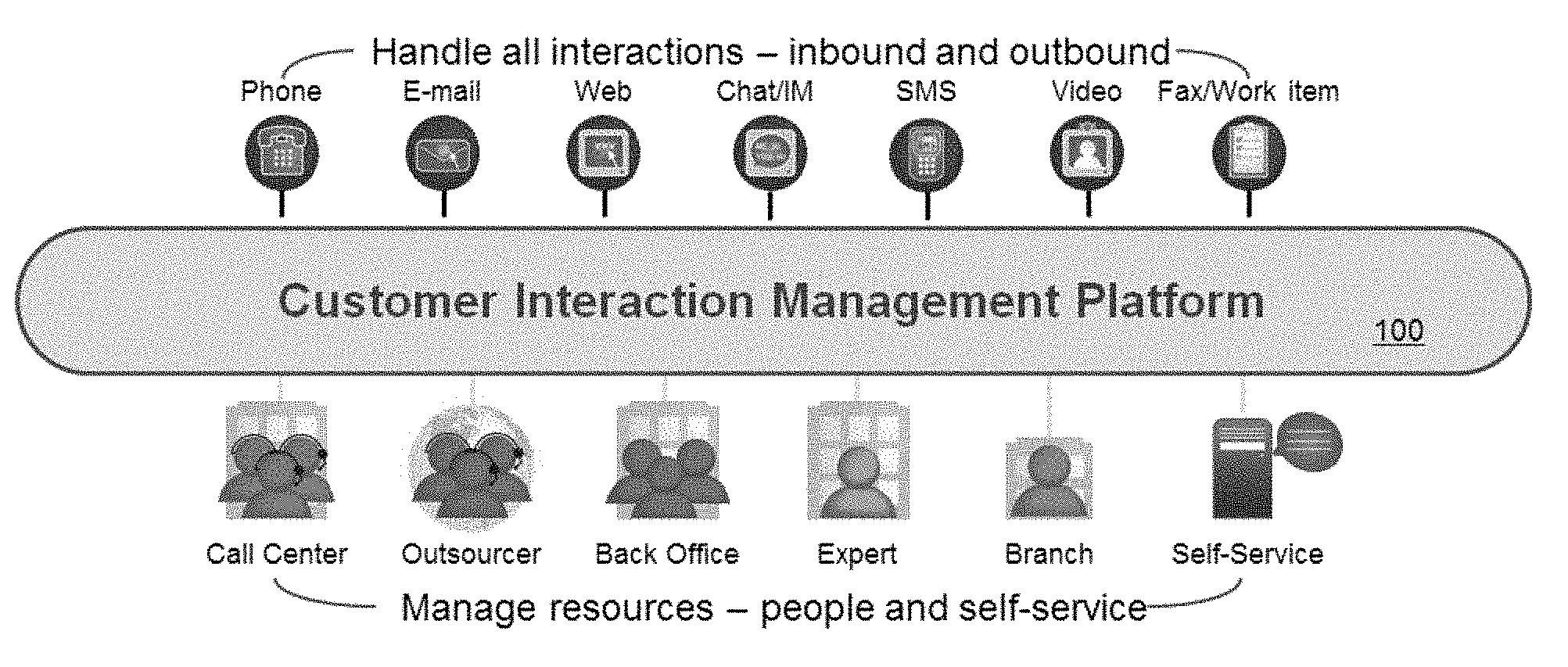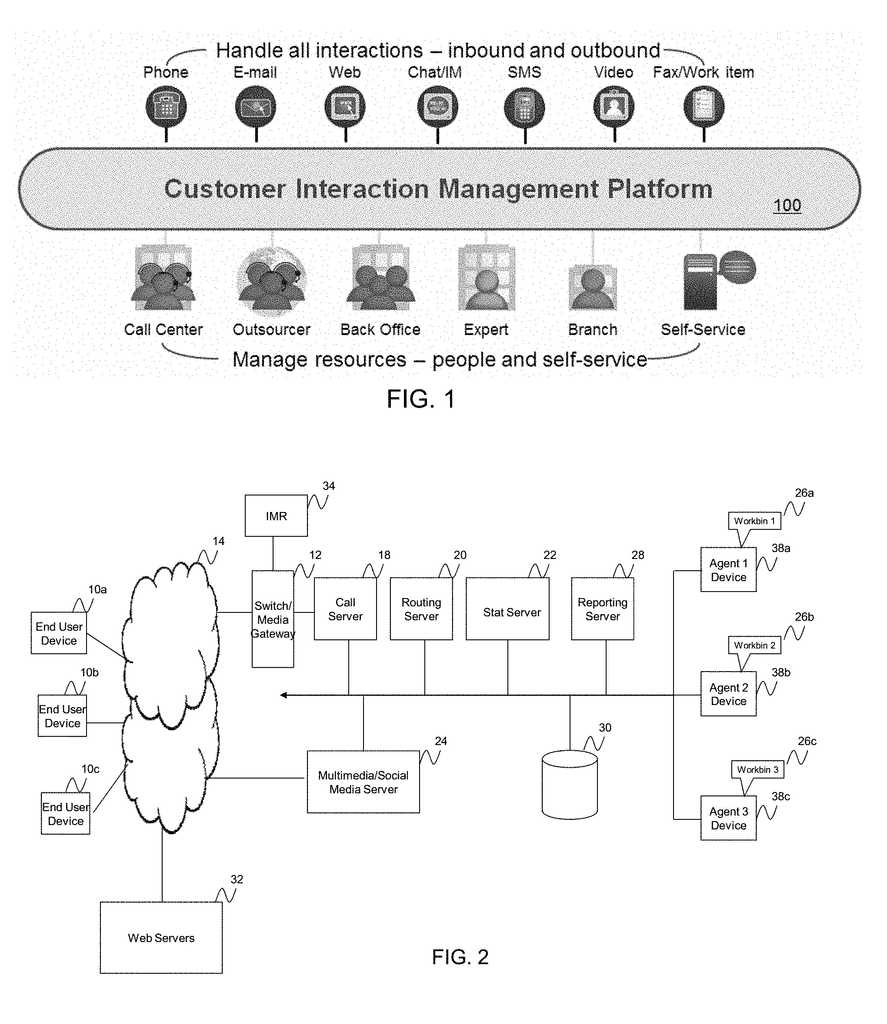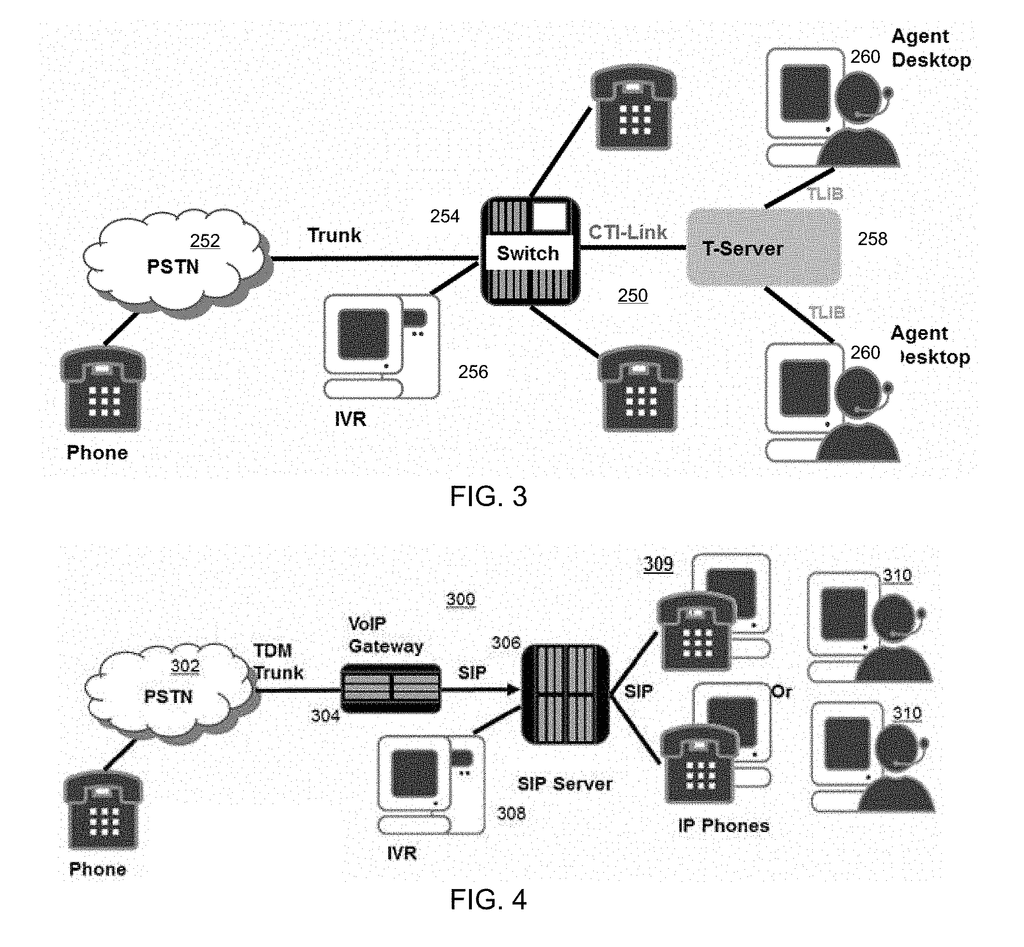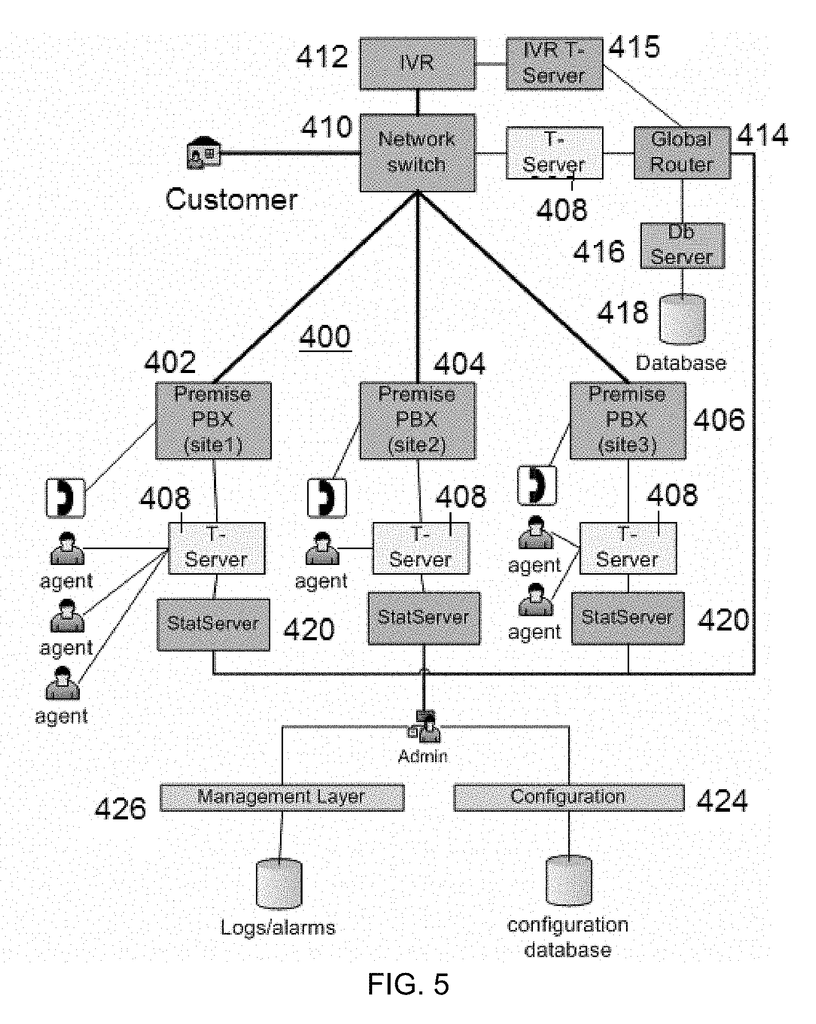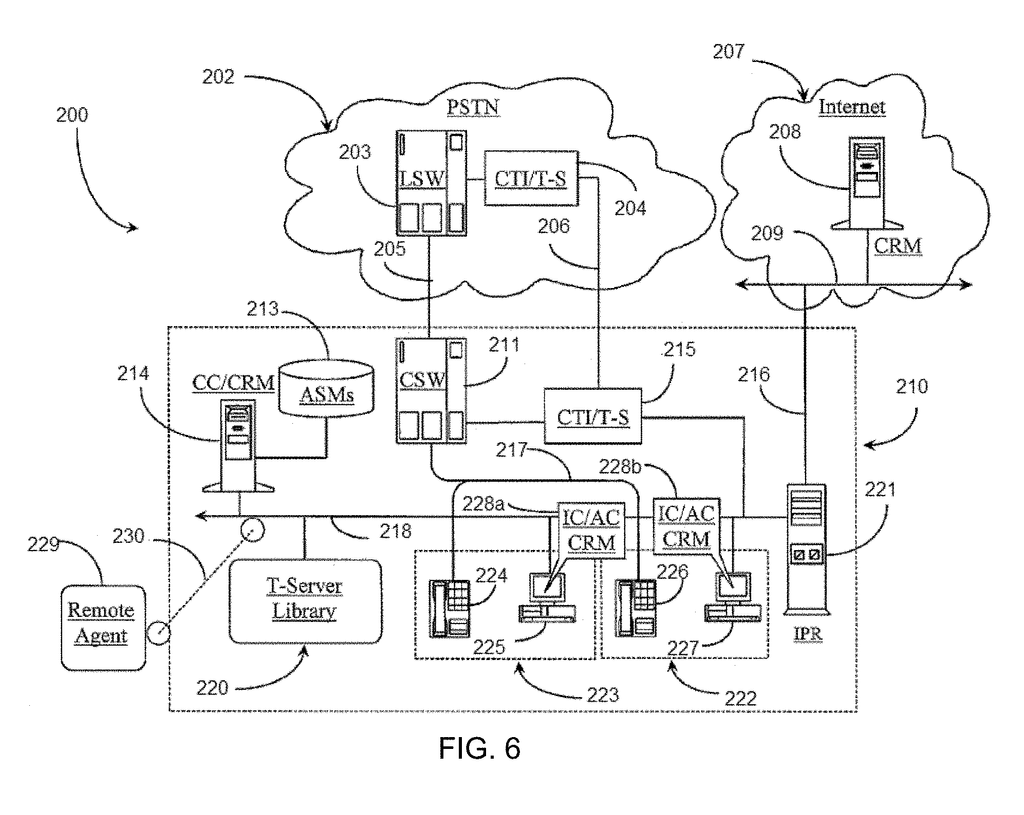Invented by Nikolay Korolev, Herbert Willi Artur Ristock, David H. Anderson, Todd Hollenberg, Bradley Krug, Charlotte Toerck, Bank of America NA
Intelligent routing is the process of directing customer interactions to the most appropriate agent based on a variety of factors, including the customer’s history with the company, the agent’s skills and availability, and the urgency of the customer’s issue. Dynamic routing takes this a step further by continuously analyzing these factors in real-time and adjusting the routing accordingly.
The market for these systems and methods is growing rapidly, as businesses recognize the importance of providing personalized and efficient customer service. According to a report by MarketsandMarkets, the global market for contact center software is expected to reach $35.32 billion by 2023, with intelligent routing solutions being a key driver of this growth.
One of the main benefits of intelligent and dynamic routing is improved customer satisfaction. By directing customers to the most appropriate agent, businesses can ensure that their issues are resolved quickly and efficiently. This can lead to higher customer retention rates and positive word-of-mouth referrals.
Another benefit is increased efficiency and productivity for the contact center. By automating the routing process and using real-time data analysis, agents can spend less time searching for the right information and more time resolving customer issues. This can lead to lower operating costs and higher agent satisfaction.
There are several key players in the market for system and method for routing interactions for a contact center based on intelligent and dynamic routing considerations. These include Avaya, Cisco, Genesys, and NICE inContact, among others. These companies offer a range of solutions, from basic routing algorithms to advanced machine learning models that can predict customer behavior and preferences.
In conclusion, the market for system and method for routing interactions for a contact center based on intelligent and dynamic routing considerations is a rapidly growing industry. Businesses are recognizing the importance of providing personalized and efficient customer service, and intelligent routing solutions are a key driver of this trend. With the right system in place, businesses can improve customer satisfaction, increase efficiency and productivity, and ultimately drive growth and profitability.
The Bank of America NA invention works as follows
A system and method of enhanced interaction processing within a contact centre that includes routing interactions according to adaptable business goals. A processor detects an upcoming interaction with a client. In response to the detected pending interaction, the processor identifies the first and second contact center objectives. The first objective is deemed more important for the contact centre than the second. The processor identifies the first agent to handle the first goal, and determines the likelihood that the agent will be successful in achieving this first objective. The processor identifies the second agent to handle the second goal, and determines the likelihood of success for the second agent. If the second agent has a higher likelihood of achieving the objective than the first agent does, then the processor sends the instructions to route any pending interactions to the second. The processor also instructs the second agent on how to achieve the second goal.
Background for System and Method for Routing Interactions for a Contact Center Based on Intelligent and Dynamic Routing Considerations
A customer-centric organisation needs to integrate seamlessly its operations with customer intelligence in order to ensure a 360-degree, complete view of the client. Each interaction is treated as a chance to improve customer satisfaction through superior service. This leads to higher loyalty and retention. If done correctly, they can lead to greater success for both profit and non-profit businesses and services.
It is well known that a customer interaction management platform can be cloud-based, on-premises or hybrid. This platform will handle various types of interactions, including inbound and outbound (e.g. traditional voice, voice over IP, email, webchat/IM, SMS/MMS/video, fax, other work items etc.). The platform can be used to access different types of resources, such as a contact centre agent, a back-office, an expert/knowledge work, a branch, a self service operation, or an outsourced operation. Through the platform, customers can interact with different types individuals (e.g. contact center agents or knowledge workers. Across multiple channels, including contact center/IVRs, proactive engagements on the web, mobile, social media etc .).
In one embodiment, the customer interaction platform includes a contact centre, agent stations and optionally a CRM server. The contact center, agent stations, and the CRM server are typically connected via one or more networks. These may include the Internet, private networks, or telephone networks. Customer relation management servers can be located in the contact centre and maintained by third parties, or they can be located remotely from the center but still managed there. The CRM server can be used to route end user interactions that require management for the agents in the contact center. In one typical operating scenario, a contact center implements an object-based model of agent status that includes data such as agent identification and workflow assignments. It also contains media capability descriptions and status elements relating to communication and media. This agent state model is dynamic and updates in real time as the agent communicates with an end user through multimedia applications.
Traditionally, routing interactions involves sending control signals (as opposed the media part of the interaction which is not routed) into one or more queues of agents. Queues may be associated with specific types of interactions and with agents’ skills or other characteristics. Routing logic typically assigns interactions to the agents according to configured logic such as least-occupied agent, longest-idle, etc. In an alternate scenario, the interaction is routed into an agent queue where it will be picked up by a available agent who is associated with that agent and has the required skill level and is available to communicate the necessary communication with the client. In a hybrid approach, an agent may have a personal workbin where they can deferrable tasks (e.g. email, answering a letter from a client, proactively contacting the customer, etc.). In this mode, agents are usually given some flexibility to choose which tasks they want to complete next. Workbins are used by agents to store interaction that they’ve started and want to continue at a future time. A routing server can also distribute interactions to workbins. Workbins are similar to queues in that they hold interactions. However, workbins are typically associated with an agent. Multiple agents can use a shared group workbin in a place or group. The workbin can be viewed by agents and interactions can be pulled from it at any time. In a scenario where agents are given flexibility to select interactions, they can typically view certain details (e.g. statistics like the number of interactions queued, average wait time or service level). They can view a queue that contains all the interactions they have been assigned to manage. The processing of interactions in the queue is usually automated, but an agent can interact with identified or viewable interaction. When given the option (possibly restricted by policies or service levels), an agent can choose the interactions or contacts that are easiest to resolve or with whom he is most familiar. Agents are typically trained to perform certain tasks and activities. Some of these may be assigned to the agent based on, for instance, a specific’skill. Attribute that can be enabled or deactivated at any given time. As a customer interaction progresses, a customer may be passed from one agent onto another. This could happen because of business process workflows, or because the first agent was unable to meet the customer’s needs. While switching agents is necessary at times, it’s best to minimize the impact of context switches, especially when an agent knows a customer’s history and is able to handle any anticipated follow-up.
In a conventional interaction, the logic of the contact center’s agent assignment routes incoming interactions to the agent that the system determines as the “best” The agent is selected or defined based on one or more criteria, such as availability, occupancy and static customer segment. The agent is typically selected or defined by one or more criteria such as availability or occupancy, a static customer segment or priority, the required skills for an interaction in a particular media type, agent capability, previous customer interactions (e.g. last agent routing), or other criteria such as upsell or cross-sell opportunity, agent skill, or similar criteria.
While these techniques are effective, they could be improved with enhanced contact center routing strategies.
Embodiments” of the present invention relate to a system for enhanced interaction processing within a contact centre. A processor detects an upcoming interaction with a client. In response to detecting a pending interaction, the processor identifies the first and second contact center objectives. The first objective is deemed more important for the contact centre than the second. The processor identifies the first agent to handle the first goal, and determines the likelihood that the agent will be successful in achieving this first objective. The processor identifies the second agent to handle the second goal, and determines the likelihood of success for the second agent. If the second agent has a higher likelihood of success than the first agent in achieving its second objective, the processor sends an instruction to route the interaction to the agent. The processor also instructs the second agent on how to achieve the second goal.
According to one embodiment, a first objective is associated to a first business result that the contact center has determined to be more desired than a second outcome associated with the other objective.
According to one embodiment, a business outcome is profit, revenue or sales for the contact center.
According to one embodiment, a business outcome is customer satisfaction.
According to one embodiment, the likelihood that the first agent or the second agent will achieve the first or the second objective is based on an analysis of their historical performance in relation to the first and the second objectives.
According to one embodiment, a second objective is linked to a business chance to be presented to a customer. This business opportunity could be a cross sell or up-sell of a service or product.
According to one embodiment, a pending interacation is to achieve a step in a workflow associated to a case. An agent selected to handle the pending interacation is an agent who has skills to handle the next step of the work flow.
Accordingly, according to one embodiment, a processor retrieves identification of a customer segment that the customer belongs to, when the processor detects the pending interac-tion, and where the customer segment is linked to a third goal of the contact centre. The processor predicts the outcome of the interaction and identifies the second customer segment on the basis of the predicted outcome. The processor re-associates a customer with a second segment. In one embodiment, the second segment of customers is linked to the second objective.
The following detailed description and appended claims will help you to better understand these and other features, benefits, and aspects of the invention. The appended claims define the scope of the invention.
In general, embodiments are directed at a platform for managing customer interactions that utilizes a number of interaction routing strategies in order to determine which agents will receive and manage specific contacts. The platform has an agent assignment scheme that is enhanced to implement one or several of a number of routing schemes. One routing scheme adjusts the customer service level in which an agent assignment mechanism will be executed. A second routing system operates using the agent-assignment mechanism during an interaction to automatically select which of a number of business objectives a particular agent should address. To facilitate assignment, a third routing scheme gives the agent assignment mechanism a parameter or parameters related to a particular case. These routing strategies can be implemented in full or in part simultaneously or sequentially.
The one or multiple routing strategies may include dynamic customer segmentation?” The strategy provides an assessment of the customer’s current segmentation (e.g. gold, silver or bronze) and reassesses it a priori. This analysis is then used to determine, based upon the anticipated outcome for a new customer interaction and this analysis, whether a customer’s segment association should be promoted (for any new interactions). This could be the case if, for instance, the anticipated outcome was to promote the customer into a higher-level segment. The current interaction would then be treated according to the policies of the higher-level segment. The demotion or promotion of the customer segment may be dependent on context and can occur per interaction or over a period of time for multiple interactions.
Another routing strategies implements an “adaptive business objectives” Agent assignments are based on an adaptive business objective strategy, which allows for the adjustment of the business objective during agent assignment. This is a better alternative to a static or fixed business objective. This approach consists of two components: a business objective (BO) and a business opportunity (e.g. cross-/upsell offers), which are based on the customer’s profile. These factors are used to define a customer’s business objectives. The routing logic begins the agent selection by selecting the first (best) Business Objective. If no such agent can be found, a next best BO is used, and so on until an appropriate agent is found to handle the interaction according to the (potentially-adjusted) BO. The BO-agent pair is then ranked according to the probability that the agent will be successful in handling the BO. In one embodiment, the agent with the highest ranking is selected, and the interaction is routed to this agent to handle the BO associated.
Yet Another Routing Strategy Implements a Case Routing?” A strategy is determined in part by a “case record” Associated with an interaction such as, but not limited to, a CRM-sourced interactivity. A CRM server or system, or another customer database system, (collectively called CRM system), may be a component or associated with the contact center. It models customer support interactions (between a system and one of its clients) as “cases.” A case (or “ticket”) is a customer support interaction between a system and its customers. A case (or?ticket?) has an associated record that contains information about the case. This includes the type of the case, the anticipated workflow to a possible resolution, the anticipated time, the escalation path, etc. A case can be assigned to a specific template based on the type of customer support issue, depending on which CRM system the case originated from. A case record is used in case routing to determine which agent from a group of agents at a contact centre should be assigned to the case. A best or target agent can be selected without limitation based upon one or more factors such as the identity of the next interaction in the processing (as defined by a case workflow), or one or more future interactions anticipated for a given case (e.g. based on predefined workflow steps, or dynamic adjustments based on an anticipated outcome of one particular step). The case should be handled by the same agent if possible. Other factors include the presence of previous interactions, whether they have been reopened, the remaining time to complete the case and other similar things.
According to this disclosure, routing techniques described above may be used alone or in combination. In one embodiment, a dynamic customer segmentation is used in conjunction with an adaptive business objective strategy, or case routing. In another embodiment, adaptive business objectives are implemented with case routing. Another alternative is to combine (combine) the three strategies described above. These routing strategies can be implemented in full or in part simultaneously (synchronously), or sequentially.
FIG. “FIG. 1 shows a platform for customer interaction management 100, which may be cloud-based or on-premises, hybrid, or both. It is not necessary for the platform to be operated by an independent service provider. Platform 100 can handle all interactions, inbound and outbound. These interactions, as illustrated, include voice, email, web chat/IM SMS, video fax/work items and more. The interactions are directed at various resources, such as a back office, call center, expert (knowledge worker), branch office, self-service, etc. The platform should preferably implement a framework consisting of a number of operational layers. These include a configuration layer, which provides data integrity control, runtime notifications and access control, a management level, which allows the customer to monitor behavior and the status of the applications running on the platform (e.g. solution control, fault management, alarm processing and troubleshooting), and a media layer, which provides external interfaces and switch independence for the applications.
Click here to view the patent on Google Patents.
